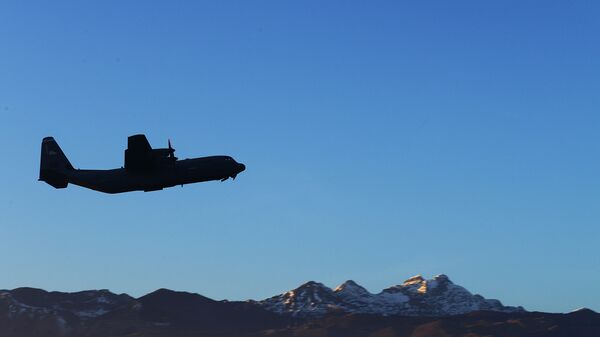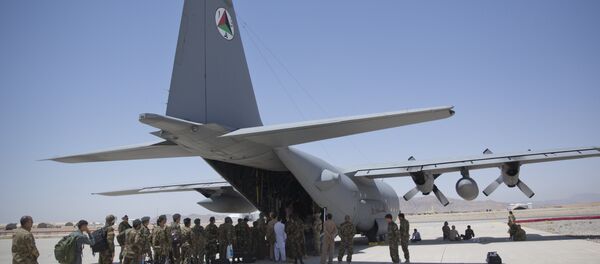Though an investigation into the crash is still pending, the Pentagon immediately issued a statement saying there was no indication of hostile fire in the incident.
"With high confidence, it does not appear at this time that enemy fire was involved in the aircraft crash," Maj Tony Wickman of the 455th Air Expeditionary Wing at Bagram said, according to the Guardian. "We have first responders working at the crash site doing recovery operations. An investigation is underway to determine the cause of the incident."
But five hours after the C-130 crashed, the Taliban claimed responsibility for the attack.
"Our mujahideen have shot down a four-engine US aircraft in Jalalabad," Taliban spokesman Zabidullah Mujahid posted on Twitter. "Based on credible information, 15 invading forces and a number of puppet troops were killed."
Though it is widely believed that the Taliban is not in possession of the surface-to-air missiles that could bring down such an aircraft, and though the terror group is known to exaggerate military gains, the US’ history of covering up similar incidents in the past does raise some eyebrows.
There has been at least one documented incident of the US covering up a similar attack. In 2007, when a CH-47 transport helicopter, known as the Chinook, crashed near the Afghan Helmand River, killing seven soldiers, NATO officials suggested that the chopper was brought down by small-arms fire.
However, in classified documents released by WikiLeaks in 2010, it was revealed that Chinook had in fact been "engaged and struck with a missile," indicating that the Taliban had started using surface-to-air missiles, which, at the time, was a significant development in the conflict.
The information was never publicly disclosed.
The Taliban’s claim of responsibility for the C-130 crash comes after it held the strategic city of Kunduz for three days. Afghan special forces reclaimed the territory on Wednesday, but the fighting is still ongoing, with many of the area’s residents reluctant to return.




